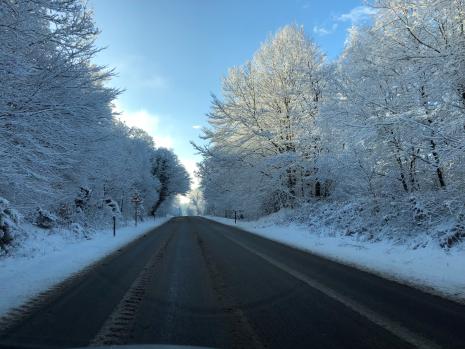Snow and ice can be dangerous for drivers, making it critical to understand how to handle such conditions safely.
Before travelling please check our traffic alerts for road restrictions or closures. If there are closures on non-trunk roads, check with your local authority.
Before you travel
Do you need to drive?
Consider if your journey is essential or can it wait until the weather improves. If it is, follow your local Police advice, check the weather forecast, and consider if you can take alternative travel such as public transport. Remember - to plan for your return journey too.
How can I prepare for driving in icy conditions?
Make sure you have complete visibility from your windscreen and that your vehicle has been de-iced. Your wipers and lights should be working, and you should have plenty of fuel in your car, more than you'll need for your journey. If you travel frequently on icy roads, winter tyres are advisable.
What should I have in my car?
We advise that you have the following items in your vehicle to provide additional protection. These include an ice scraper and de-icer, a torch with spare batteries, blankets, sunglasses, bright-coloured clothes (such as a high-vis), boots, a shovel, and a first aid kit.
During your trip
Stick to the main roads where you can
The main roads are more likely to have been gritted so will likely be safer to drive.
Adapt to the conditions
Pay attention to the road conditons. Keep more distance from traffic, avoid surface water, reduce speed and take additional care.
Slow down
The stopping distance in icy conditions is ten times more than in dry conditions.
For more information on driving in snow or ice, please use the following resources:

